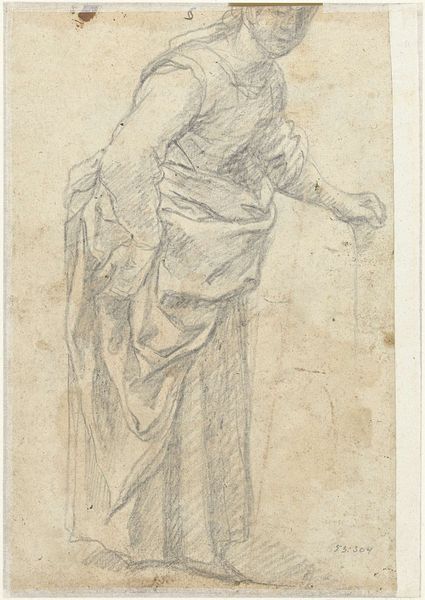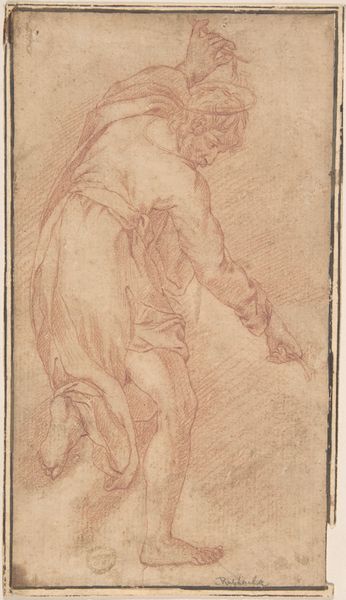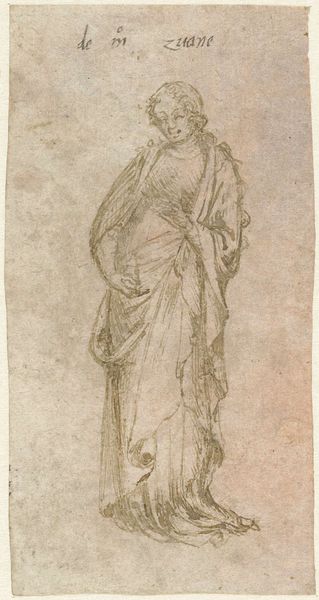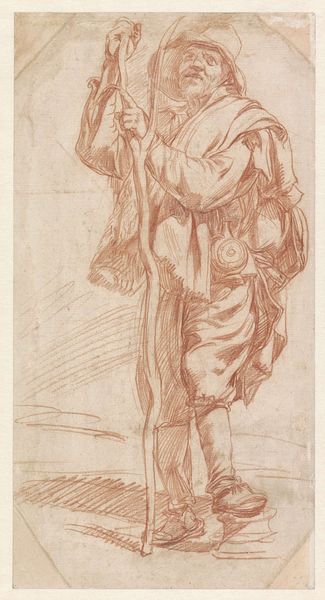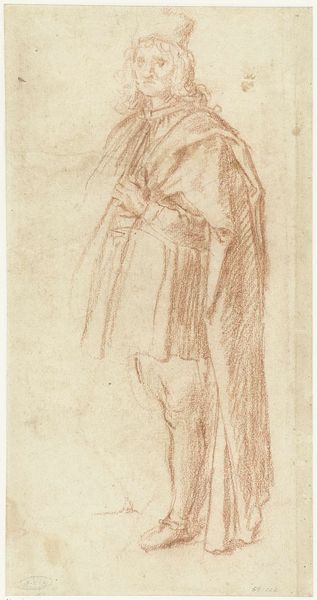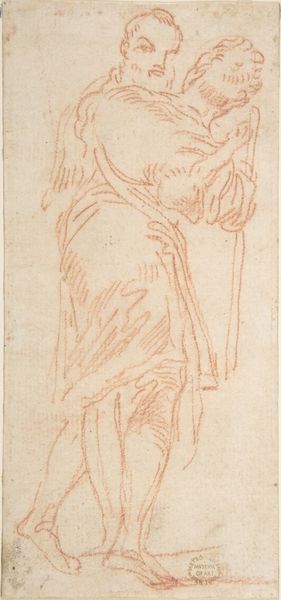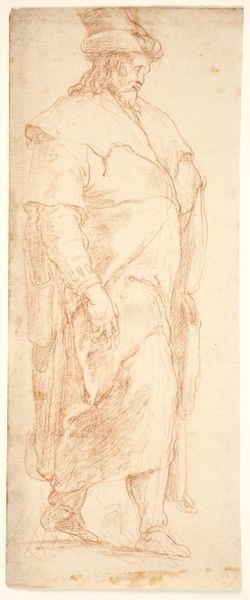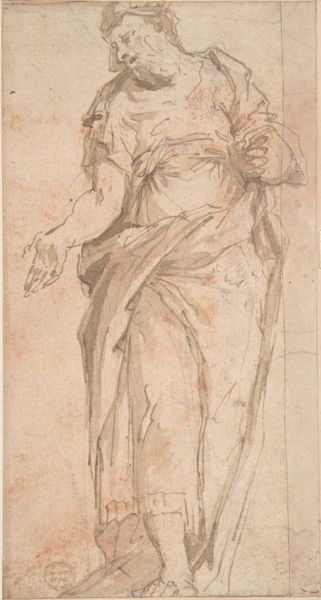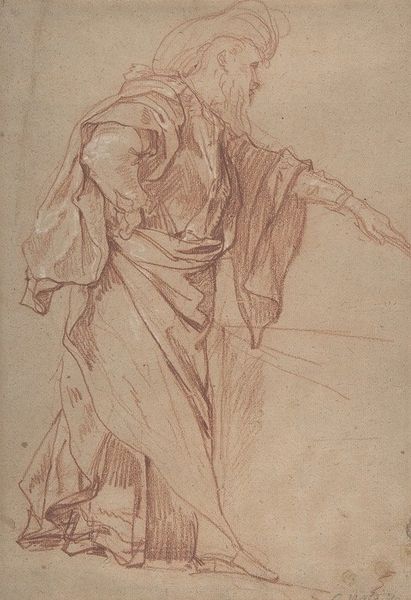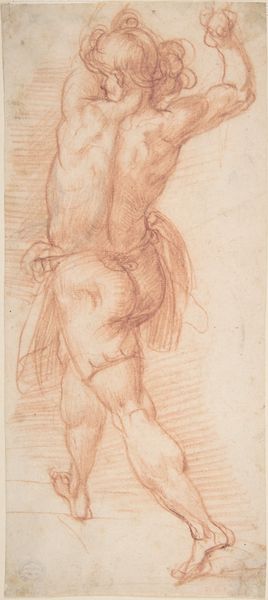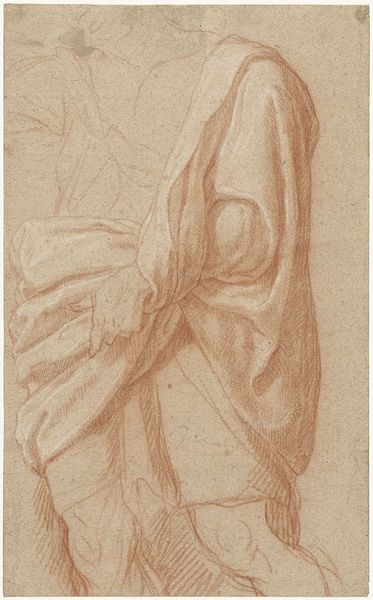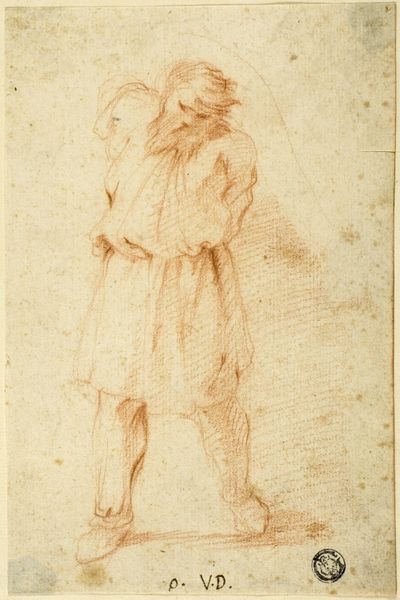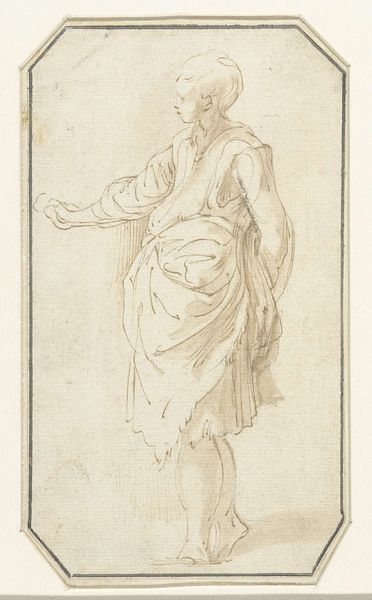
drawing, paper, charcoal
#
drawing
#
baroque
#
figuration
#
paper
#
charcoal
#
nude
Dimensions: height 106 mm, width 60 mm
Copyright: Rijks Museum: Open Domain
Editor: Here we have Giacinto Brandi's "Johannes de Doper," created sometime between 1633 and 1691. It's a charcoal drawing on paper and has a real sketch-like quality. What strikes me most is how the drapery seems to be the main focus; the body underneath is suggested more than defined. How would you interpret this work? Curator: The apparent sketch-like quality is quite interesting. Brandi, situated within the Roman Baroque, likely saw drawing as more than preliminary. The materiality of charcoal and paper points us to the artist's labor. Was this drawing conceived as an end product, or a means to exploring form in preparation for a larger commission? Consider the economic context of the artist—patronage dictated artistic output. Editor: That's interesting; it flips my initial read on its head. I assumed that because it looks like a sketch, it was probably a preliminary study. You are suggesting it could be a finished piece. Is there something about the marks that point to labor and intention, beyond the study of form? Curator: Precisely! Notice how the charcoal isn't just describing light and shadow; the hatching creates texture, adding a tactile quality to the drapery. We are not merely looking at fabric; we are considering the craft of its rendering. What might Brandi be saying about the relationship between artistic labor, religious iconography, and the developing art market? Also, the scale and price point of drawings on paper made art more accessible and fueled new consumer behaviours. Editor: So, beyond just religious iconography, Brandi’s focus on the drapery highlights his technical skill, becoming a commentary on the means of production of art itself. Fascinating! I had not thought about the labor aspect so intently, but it is right there in front of us, isn't it? Curator: Exactly. It forces us to see the layers of production inherent in the object, and how an artwork operates as a commodity within a specific time and social class. Editor: I'm definitely seeing Brandi's drawing with fresh eyes. I learned a lot about seeing beyond the surface and towards labor and production! Curator: And I'm glad to see that focusing on process can offer valuable new insight.
Comments
No comments
Be the first to comment and join the conversation on the ultimate creative platform.
